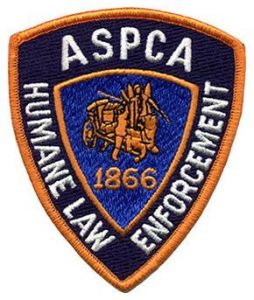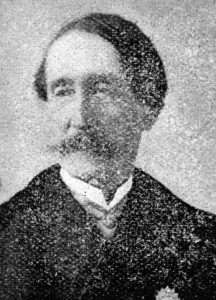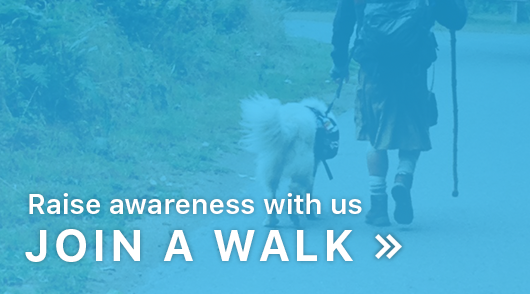
NYC ASPCA Police Patch
On April 10, 1866, the American Society for the Prevention of Cruelty to Animals (ASPCA) is founded in New York City by philanthropist and diplomat Henry Bergh, 54.
In 1863, Bergh had been appointed by President Abraham Lincoln to a diplomatic post at the Russian court of Czar Alexander II. It was there that he was horrified to witness work horses beaten by their peasant drivers. En route back to America, a June 1865 visit to the Royal Society for the Prevention of Cruelty to Animals in London awakened his determination to secure a charter not only to incorporate the ASPCA but to exercise the power to arrest and prosecute violators of the law.
Back in New York, Bergh pleaded on behalf of “these mute servants of mankind” at a February 8, 1866, meeting at Clinton Hall. He argued that protecting animals was an issue that crossed party lines and class boundaries. “This is a matter purely of conscience; it has no perplexing side issues,” he said. “It is a moral question in all its aspects.” The speech prompted a number of dignitaries to sign his “Declaration of the Rights of Animals.”
Bergh’s impassioned accounts of the horrors inflicted on animals convinced the New York State legislature to pass the charter incorporating the ASPCA on April 10, 1866. Nine days later, the first effective anti-cruelty law in the United States was passed, allowing the ASPCA to investigate complaints of animal cruelty and to make arrests.
Bergh was a hands-on reformer, becoming a familiar sight on the streets and in the courtrooms of New York. He regularly inspected slaughter houses, worked with police to close down dog- and rat-fighting pits and lectured in schools and to adult societies. In 1867, the ASPCA established and operated the nation’s first ambulance for horses.
As the pioneer and innovator of the humane movement, the ASPCA quickly became the model for more than 25 other humane organizations in the United States and Canada. And by the time Bergh died in 1888, 37 of the 38 states in the Union had passed anti-cruelty laws.
Bergh’s dramatic street rescues of mistreated horses and livestock served as a model for those trying to protect abused children. After Mary Ellen McCormack, 9, was found tied to a bed and brutally beaten by her foster parents in 1874, activists founded the New York Society for the Prevention of Cruelty to Children. Bergh served as one of the group’s first vice presidents.
Medicine for animals under ASPCA
One of the early goals of ASPCA was to improve the health and welfare of animals. The first animal hospitals under ASPCA were created in 1912. Since the creation of these hospitals, ASPCA found a new tactic in improving its cause: the ability to develop various medical procedures and innovations with help from new discoveries in medicine and technology. Some of these procedures and innovations include the following:
· In 1918, ASPCA veterinarians developed the use of anesthesia and as a result were able to work on a horse with a broken kneecap
· In 1954, ASPCA hospitals added pathology and radiography laboratories and programs
· In 1961, ASPCA veterinarians performed their first open-heart surgery on a dog[6]
Resources for pets and parents
This initiative is designed to assist individuals’ care for their animals in a proper and ethical way. Some services offered to assist individuals are:
· A 24-hour Animal Poison Control Line
· Free expert training and behavior advice
· A dedicated staff of veterinarians ready to provide high-quality medical care
· ASPCA mobile spay/neuter clinics that serve low-income communities throughout New York City
· Pet loss support services for those who are grieving
24 hour animal poison control line requires $65 payment by credit card
Outcomes for at-risk animals
This program is designed as an initiative to take steps to take care and provide for at-risk animals around the country. Some programs designed to help at-risk animals include:
· The ASPCA Mission: Orange Initiative: An invitation of key cities across the United States to join ASPCA in ending the unnecessary euthanasia of adoptable pets.
· Creating plans for animals in times of emergency by ASPCA experts
· An 8,000-square-foot (740 m2) state-of-the-art adoption facility in New York City
· ASPCA Meet Your Match, a research-based matching system to match animals with the best homes.
· Helping at-risk horses with the ASPCA Equine Fund
· The ASPCA is active in lobbying for animal welfare legislation, with regional and federal lobbyists covering all 50 states. The ASPCA communicates with federal and state legislators to consider animal-friendly legislation and bills. The ASPCA also drafts animal welfare legislation initiatives and proposals for legislators to consider during their sessions. The ASPCA’s “Advocacy Brigade” allows users to write or e-mail their legislators on important animal legislation bills and referendums.
· In 2008, the Illinois Senate passed the bill HB 5076. This bill contains various “Good Samaritan” provisions that protect rescuers from being sued if they rescue and provide for an injured animal in disasters or other emergencies. This bill also brings clarification to the Humane Care for Animals Act.

Henry Bergh
Henry Bergh’s Animal welfare work
On April 10, 1866, an act of incorporation of the American Society for the Prevention of Cruelty to Animals (ASPCA) was granted by the New York state legislature, with Bergh assuming the role of president of the new association, for which he received no financial compensation. Bergh and his wife provided initial funding for the private organization. Branches of the ASPCA were subsequently established throughout the United States and Canada.
Under Bergh’s leadership, the early ASPCA involved itself in a wide variety of issues, including slaughterhouse practices, animal transportation, care of horses, elimination of vivisection, cock fighting, and dog fighting, and the abolition of use of live pigeons in shooting matches. Bergh and the ASPCA are particularly credited for the use of clay pigeons in trap shooting.
In 1873, Bergh conducted a national lecture tour taking him across the American West. He was also able to speak on the animal welfare cause before the Evangelical Alliance and the Episcopal convention, with the latter passing a resolution giving its clergy express permission to preach an annual sermon against cruelty to animals.
Sources:








